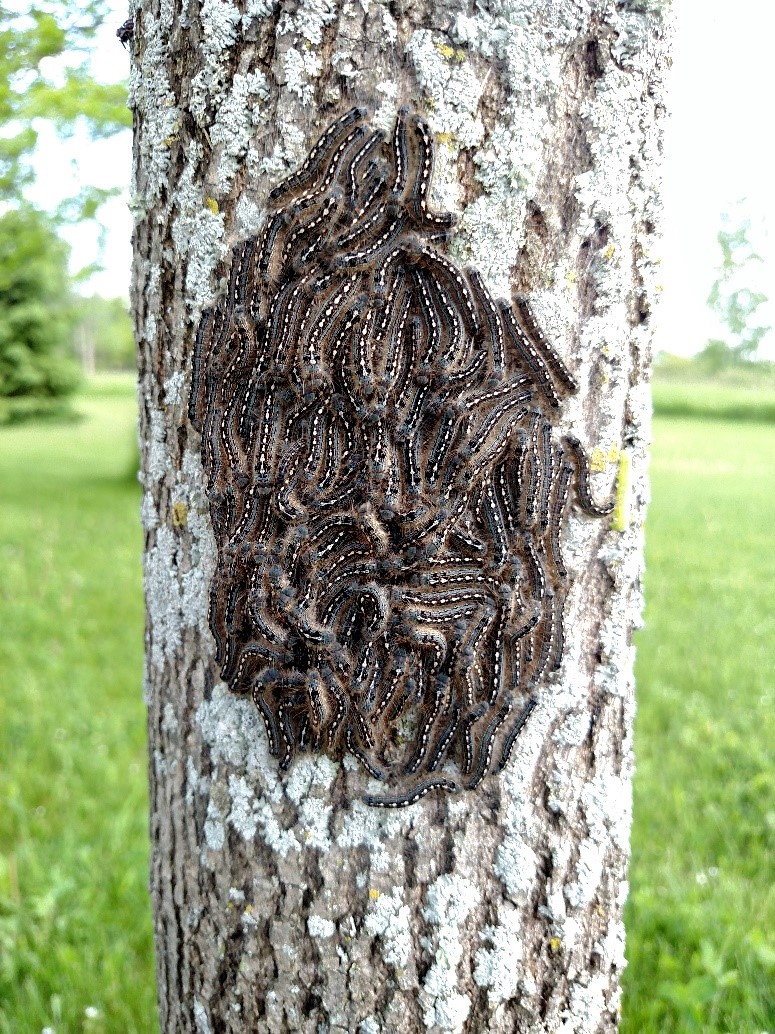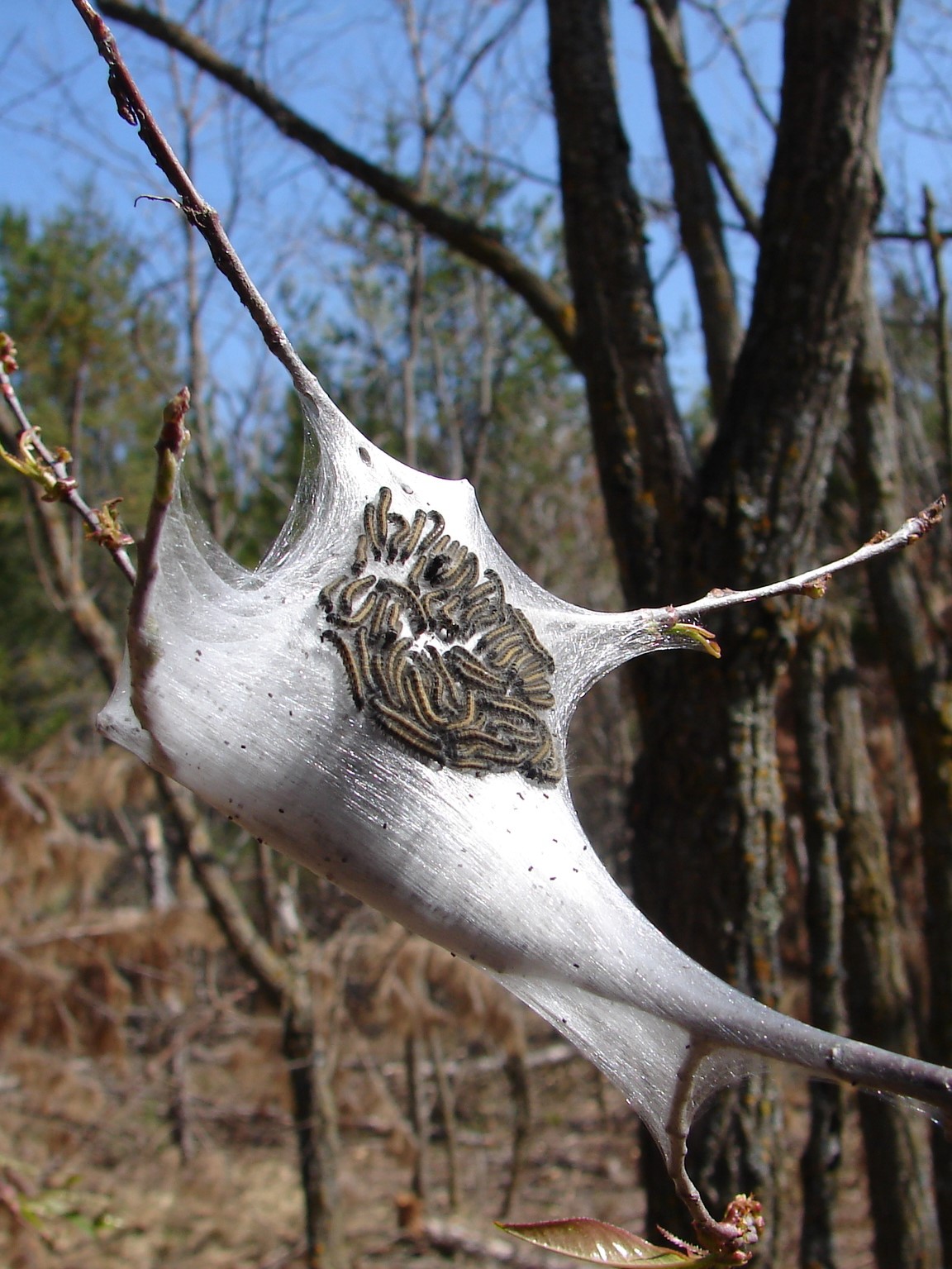By Linda Williams, DNR Forest Health Specialist, Woodruff
Linda.Williams@wisconsin.gov or 920-360-0665
Wisconsin has a few leaf-eating caterpillar species that are out early in the spring. Forest tent caterpillars, eastern tent caterpillars and spongy moth caterpillars cause varying levels of tree damage and are often mistaken for one another.
The forest tent caterpillar is a native insect that can cause widespread defoliation during periodic outbreaks. The last outbreak was about 20 years ago, starting in 1999 and ending in 2001. In 2020 and 2021, Oneida, Rusk and Sawyer counties had a few small areas of forest tent caterpillar defoliation. These caterpillars favor aspen, oak and ash.
Forest tent caterpillars can sometimes be mistaken for our native eastern tent caterpillar. While the forest tent caterpillar does not make a web tent, eastern tent caterpillars make webbed nests in trees in the spring. These web nests are often on wild black cherry trees growing along roadsides but may also be seen on crabapple and apple trees. Wild cherry trees that eastern tent caterpillars defoliate will usually send out an additional set of leaves for the summer.
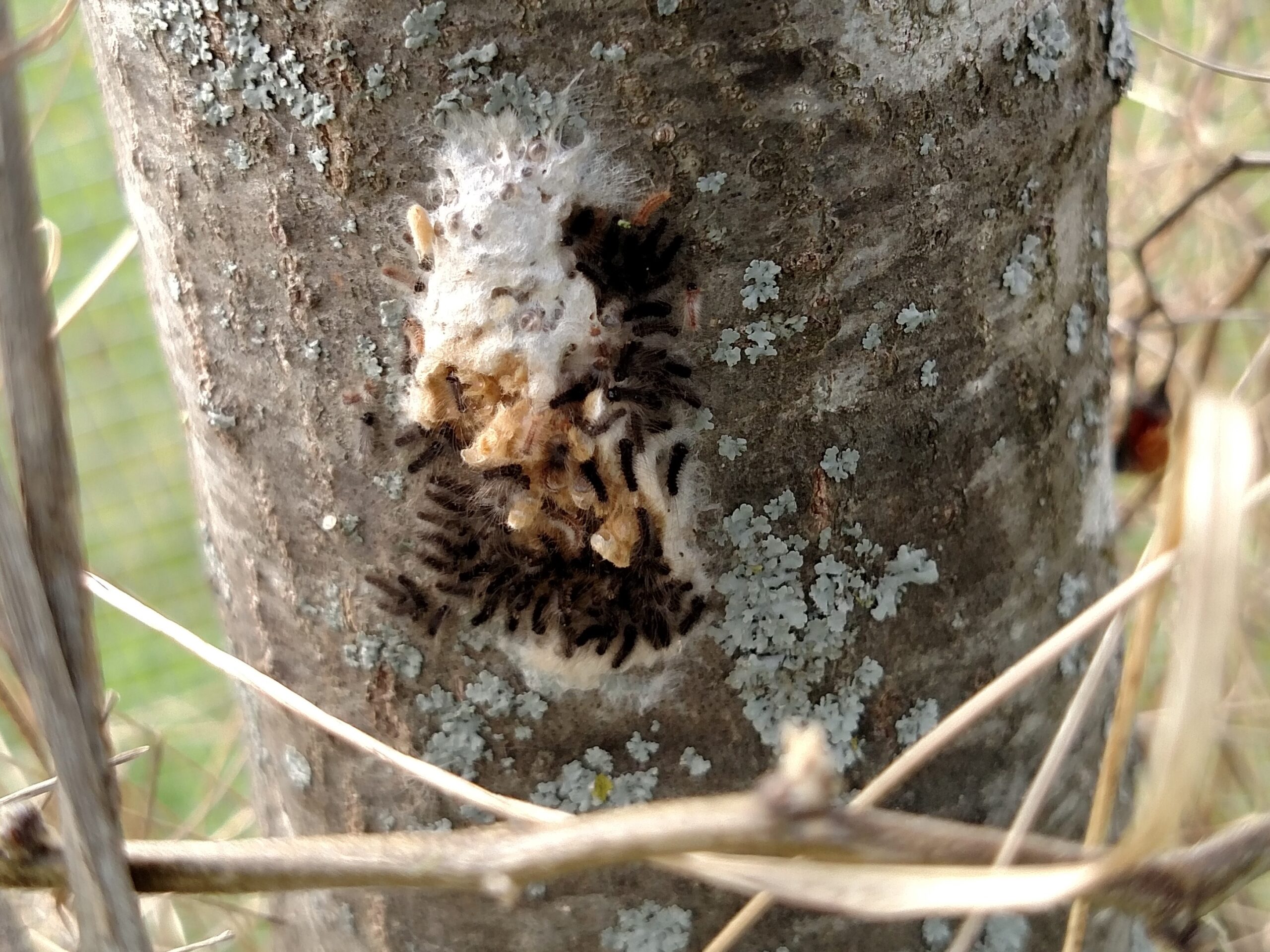
When spongy moth caterpillars begin to hatch, they will hang out on the egg mass for a day or two before dispersing to start feeding on leaves. Photo: Wisconsin DNR
Spongy moth* (formerly known as gypsy moth) is another hairy caterpillar you may see right now. The population of these insects has been increasing in Wisconsin for the last couple of years. This exotic invasive caterpillar has pairs of blue and red dots down its back and does not make tents. However, they can create some webbing during pupation to help hold the pupae in place on the tree. Like forest tent caterpillars, spongy moths prefer to feed on oak and aspen. They also eat the leaves of many other tree species, including conifers, if food is scarce.
There are several options for controlling these caterpillar numbers.
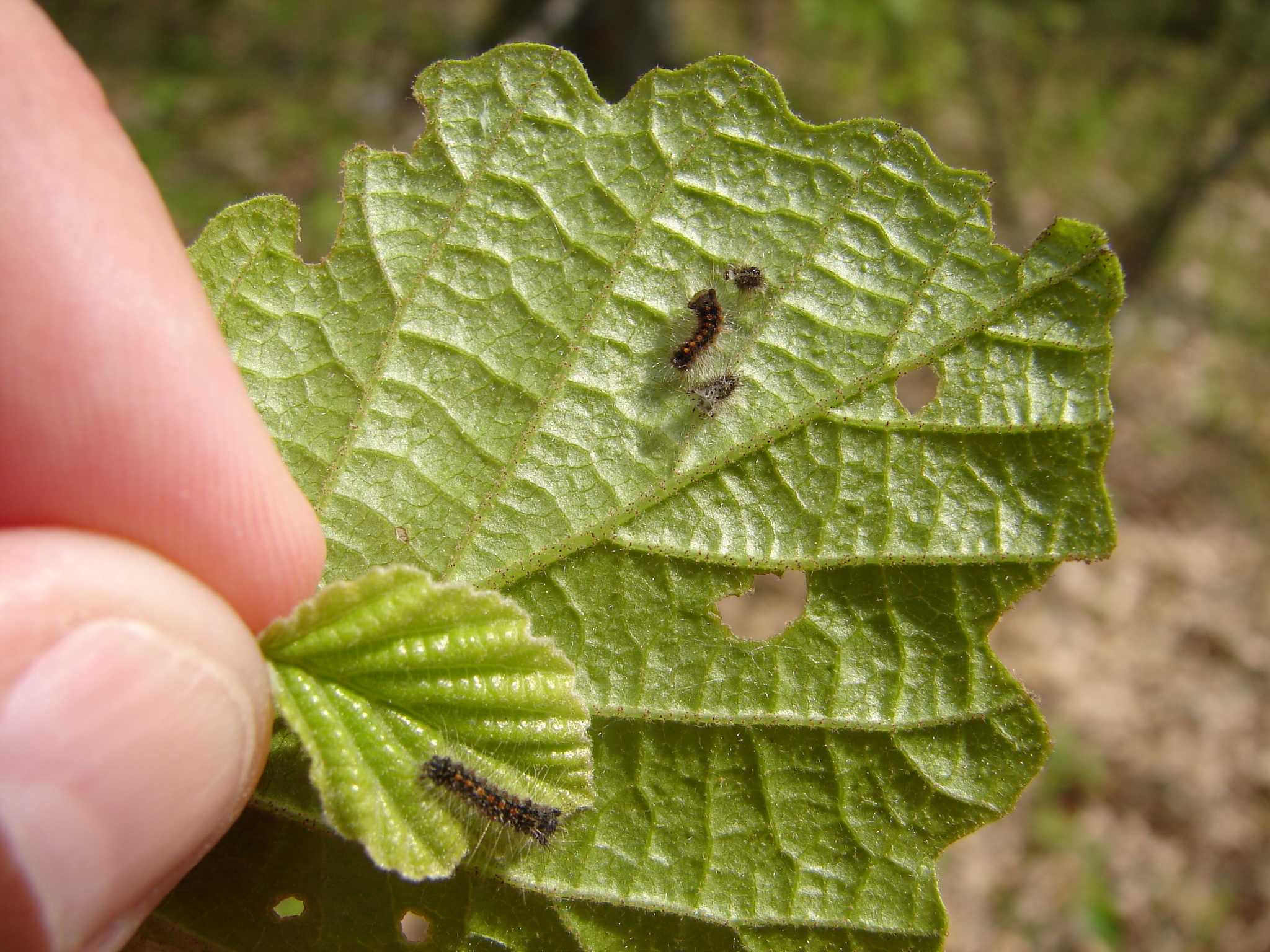
Spongy moth caterpillars start small and quickly grow as they feed on tree leaves. Photo: Wisconsin DNR
Spraying Btk, a pesticide, can be effective for all three species, which will eat the leaves covered with the pesticide and die.
Squishing the insects can also be effective. Forest tent caterpillars tend to congregate in groups on the trunks of trees during the heat of the day, making it relatively easy. Spongy moth caterpillars will congregate under burlap banding placed around a tree, and eastern tent caterpillars will congregate on their web nests.
You can squish the caterpillars with a stick or a trowel when they congregate. Or you may use a hoe or rake to pull eastern tent caterpillars and their webs out of a tree and soak them in soapy water. Caterpillars can be plucked off trees and dropped into a bucket of soapy water to soak for a few days.
Burning caterpillars out of trees is strongly discouraged. Not only can this cause damage to the tree, killing branches and portions of the main stem, but this also creates a wildfire risk.
Check out the Wisconsin DNR website for more information on forest tent caterpillar and spongy moth and UW Extension for more on eastern tent caterpillar.
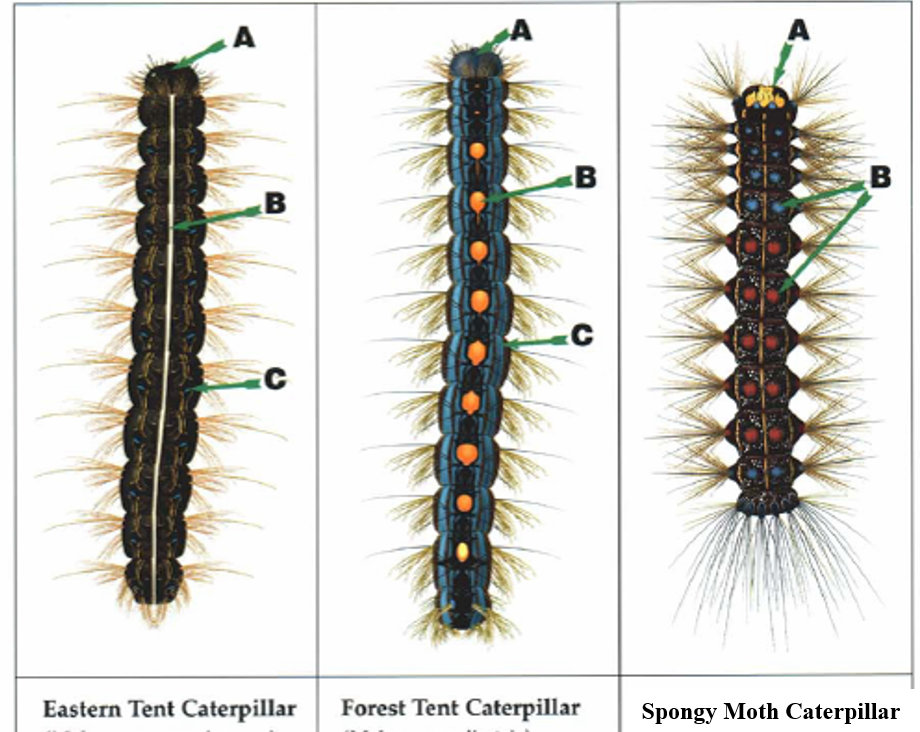
Learn more about caterpillar identification: Comparison of the Eastern Tent Caterpillar, Forest Tent Caterpillar, and Spongy Moth Illustrations: Peter Carrington
*A new common name for Lymantria dispar, spongy moth, replaced the prior name of this insect, gypsy moth, in 2022. This change was necessary because the word ‘gypsy’ is an ethnic slur and the former common name equated people with insects. For more information, visit the Entomological Society of America website.

